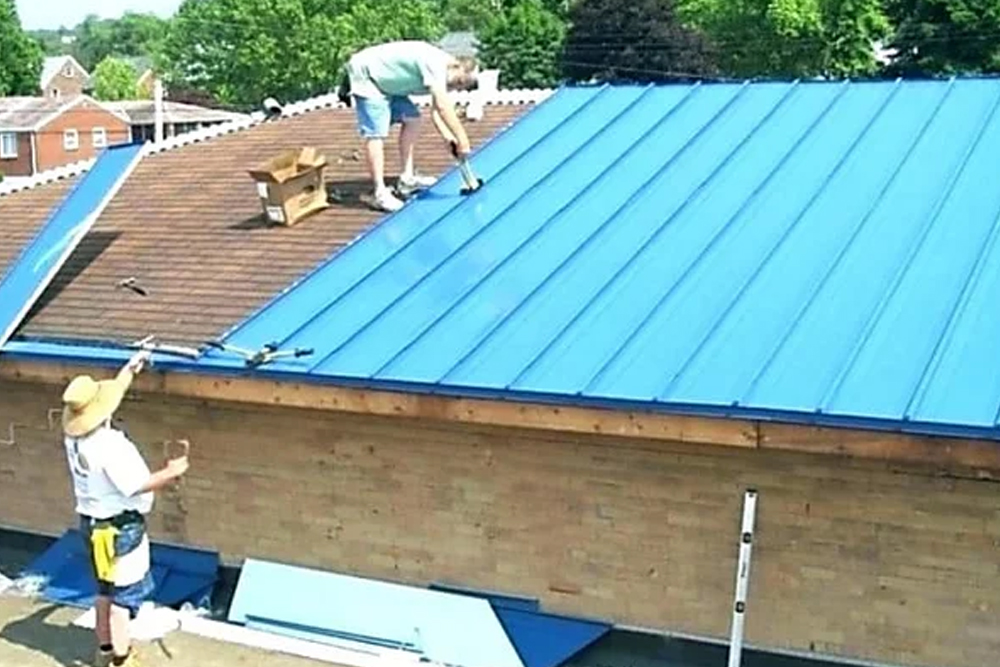Metal Gazebo Guide: Choosing, Installing, and Maintaining a Durable Outdoor Structure
A metal gazebo can transform an outdoor area into a comfortable, year‑round retreat. Making a confident choice means understanding materials, coatings, sizing, site preparation, assembly, and upkeep. This guide explains essentials in clear steps so you can plan, install, and care for a long‑lasting structure that suits your space and climate.

A well-chosen metal gazebo adds shade, structure, and year-round usability to patios, decks, and gardens. Whether you’re aiming for a quiet reading corner or a space for outdoor dining, success starts with the fundamentals: selecting the right frame and roof, preparing a stable foundation, assembling safely, and following a straightforward maintenance plan. The details below walk through each stage, emphasizing durability and safety for varied climates and site conditions.
Choosing the Right Metal Gazebo
Start by clarifying intended use, climate, and placement. For frequent dining or gatherings, prioritize headroom, integrated mosquito netting or privacy screens, and roof overhangs that shed water away from seating. In windy or snowy regions, look for published wind and snow load ratings, a rigid frame design, and anchoring options compatible with your base.
Design features to consider include vented double roofs for heat release, gutter channels that direct runoff, and hardware quality (stainless or coated fasteners). If you plan lighting or a ceiling fan, ensure the frame supports wiring routes and stated weight limits. Finally, review warranty terms and available replacement parts, especially for roof panels, fasteners, and decorative trim.
Materials, Finishes, and Corrosion Resistance
Most metal gazebos use steel or aluminum. Steel provides higher inherent strength and is commonly galvanized and powder-coated for corrosion resistance. Aluminum is lighter, naturally corrosion-resistant, and often powder-coated; it’s easier to assemble on decks or sites with limited access. Heavier-gauge metal usually improves rigidity but may require more robust anchoring.
Coatings matter as much as the base metal. Look for hot-dip galvanization (for steel) and high-quality powder coating with a multi-layer process. On cut edges or drilled holes, seal exposed metal with a compatible primer and touch-up paint. Roof panels range from powder-coated steel to aluminum and polycarbonate; metal panels offer longevity, while UV-protected polycarbonate provides light transmission with good impact resistance. In coastal or highly humid areas, aluminum or well-galvanized steel with marine-grade coatings helps resist salt-laden air.
Sizing, Placement, and Foundation Considerations
Measure furniture clearances, walkways, and door swings before selecting dimensions. Common footprints range from 3x3 m (10x10 ft) to 4x6 m (12x20 ft). Maintain safe setbacks from property lines and overhead obstructions, and verify local regulations for permanent versus temporary structures. If cooking nearby, position the structure to allow rising heat and smoke to dissipate, and ensure adequate ventilation.
Choose a base that carries the load and resists movement. Options include a reinforced concrete slab, individual concrete footings with post bases, or a properly compacted paver patio. On timber decks, confirm joist and beam capacity for the concentrated loads at post locations, and use through-bolted, corrosion-resistant post anchors. Ensure the base is level, drains well, and does not channel water toward your home’s foundation.
Assembly and Installation Best Practices
Before starting, inventory all parts, read the manual fully, and stage components by step. Work with at least two people; larger structures may require three or four for safe lifting and alignment. Protect coatings by placing parts on cardboard or cloth, and wear gloves and eye protection. Pre-thread bolts by hand to avoid cross-threading, then tighten in a star pattern to keep frames square.
Use a quality level, measure diagonals to confirm squareness, and check plumb on every post. Apply threadlocker where specified, and do not overtighten self-drilling fasteners in thinner materials. For anchors, match the system to your base: concrete wedge or sleeve anchors for slabs and footings, and structural lag screws or through-bolts with proper washers and post bases for wood. Seal roof panel laps as instructed and install flashing or sealant where the roof meets adjacent walls or structures.
Maintenance, Weatherproofing, and Safety
Establish a simple upkeep routine. Rinse frames and roof panels seasonally to remove dust, salt, or pollutants, then spot-clean with mild soap. Inspect fasteners for tightness, look for coating chips or scratches, and touch up exposed metal promptly. Clear debris from gutters and roof valleys to maintain drainage. Lubricate moving parts on doors, screens, or latches with a manufacturer-approved product.
For weatherproofing, check sealant joints annually and reseal as needed, especially around roof penetrations and panel laps. In snowy climates, follow the manufacturer’s snow-load guidance; use a soft tool to remove excess accumulation without damaging finishes. In high-wind zones, verify that anchors remain secure and consider temporary storm bracing where recommended. If adding electricity, have a qualified professional install weather-rated wiring, GFCI protection, and proper bonding; avoid using open flames or grills under a roof without compliant ventilation and clearance.
Sizing, Placement, and Foundation Considerations
A quick checklist can simplify planning: confirm site drainage, measure clearance from eaves and trees, map furniture layout, plan lighting or heaters, and document anchor locations. Photograph each installation stage for future reference. Keep spare fasteners and touch-up paint on hand so minor issues never become major repairs.
Well-specified materials, careful site preparation, and consistent maintenance determine how long your structure will last. By aligning size, coatings, base, and assembly practices with your climate and intended use, you get a durable, safe outdoor feature that remains comfortable and reliable through changing seasons.




